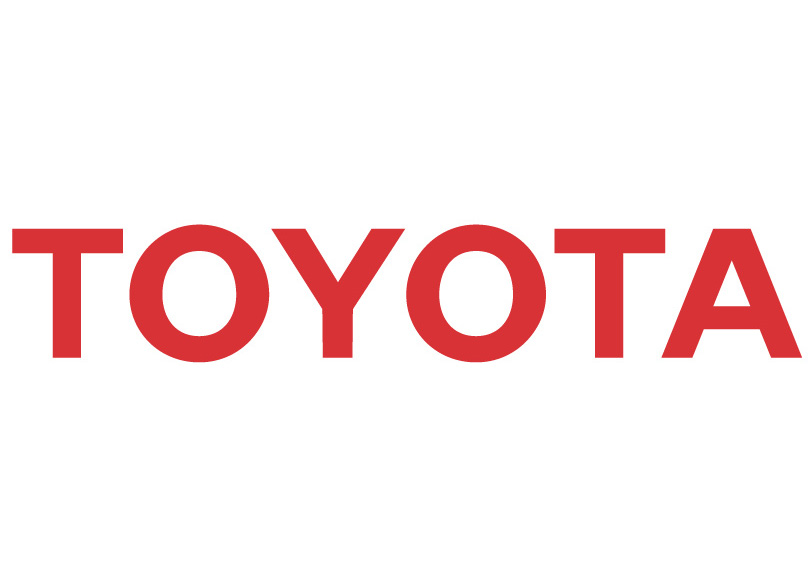Stedi maintains this guide based on public documentation from Toyota Motor Sales. Contact Toyota Motor Sales for official EDI specifications. To report any errors in this guide, please
contact us.
X12 824 Application Advice
Delimiters
- ~ Segment
- * Element
- > Component
Interchange Control Header
RequiredMax use 1
- 00
- No Authorization Information Present (No Meaningful Information in I02)
- 00
- No Security Information Present (No Meaningful Information in I04)
- 01
- Duns (Dun & Bradstreet)
- 02
- SCAC (Standard Carrier Alpha Code)
- 03
- FMC (Federal Maritime Commission)
- 04
- IATA (International Air Transport Association)
- 08
- UCC EDI Communications ID (Comm ID)
- 09
- X.121 (CCITT)
- 11
- DEA (Drug Enforcement Administration)
- 12
- Phone (Telephone Companies)
- 13
- UCS Code (The UCS Code is the Only Code Used for UCS Transmissions. It includes the Area Code and Telephone Number of a Modem. It Does Not Include Punctuation, Blanks or Access Code.)
- 14
- Duns Plus Suffix
- 15
- Petroleum Accountants Society of Canada Company Code
- 16
- Duns Number With 4-Character Suffix
- 17
- American Bankers Association (ABA) Transit Routing Number (Including Check Digit, 9 Digit)
- 18
- Association of American Railroads (AAR) Standard Distribution Code
- 19
- EDI Council of Australia (EDICA) Communications ID Number (COMM ID)
- 20
- Health Industry Identification Number
- 21
- Integrated Postsecondary Education Data System, or (IPEDS)
- 22
- Federal Interagency Commission on Education, or FICE
- 23
- National Center for Education Statistics Common Core of Data 12-Digit Number for Pre-K-Grade 12 Institutes, or NCES
- 24
- The College Board's Admission Testing Program 4-Digit Code of Postsecondary Institutes, or ACT
- 25
- American College Testing Program 4-Digit Code of Postsecondary Institutions, or ACT
- NR
- National Retail Merchants Association (NRMA) - Assigned
- ZZ
- Mutually Defined
- 01
- Duns (Dun & Bradstreet)
- 02
- SCAC (Standard Carrier Alpha Code)
- 03
- FMC (Federal Maritime Commission)
- 04
- IATA (International Air Transport Association)
- 08
- UCC EDI Communications ID (Comm ID)
- 09
- X.121 (CCITT)
- 11
- DEA (Drug Enforcement Administration)
- 12
- Phone (Telephone Companies)
- 13
- UCS Code (The UCS Code is the Only Code Used for UCS Transmissions. It includes the Area Code and Telephone Number of a Modem. It Does Not Include Punctuation, Blanks or Access Code.)
- 14
- Duns Plus Suffix
- 15
- Petroleum Accountants Society of Canada Company Code
- 16
- Duns Number With 4-Character Suffix
- 17
- American Bankers Association (ABA) Transit Routing Number (Including Check Digit, 9 Digit)
- 18
- Association of American Railroads (AAR) Standard Distribution Code
- 19
- EDI Council of Australia (EDICA) Communications ID Number (COMM ID)
- 20
- Health Industry Identification Number
- 21
- Integrated Postsecondary Education Data System, or (IPEDS)
- 22
- Federal Interagency Commission on Education, or FICE
- 23
- National Center for Education Statistics Common Core of Data 12-Digit Number for Pre-K-Grade 12 Institutes, or NCES
- 24
- The College Board's Admission Testing Program 4-Digit Code of Postsecondary Institutes, or ACT
- 25
- American College Testing Program 4-Digit Code of Postsecondary Institutions, or ACT
- NR
- National Retail Merchants Association (NRMA) - Assigned
- ZZ
- Mutually Defined
ISA-11
I10
Interchange Control Standards Identifier
- U
- U.S. EDI Community of ASC X12, TDCC, and UCS
- 00304
- Draft Standards for Trial Use Approved for Publication by ASC X12 Procedures Review Board through October 1993
- 0
- No Acknowledgment Requested
- 1
- Interchange Acknowledgment Requested
- P
- Production Data
- T
- Test Data
- >
- Component Element Separator
Functional Group Header
RequiredMax use 1
- AG
- Acceptance/Rejection Advice (999) and Application Advice (824)
RequiredHHMM, HHMMSS, HHMMSSD, or HHMMSSDD format
- T
- Transportation Data Coordinating Committee (TDCC)
- X
- Accredited Standards Committee X12
GS-08
480
Version / Release / Industry Identifier Code
- 003040
- Draft Standards Approved for Publication by ASC X12 Procedures Review Board through October 1993
Heading
Transaction Set Header
RequiredMax use 1
- 824
- X12.44 Application Advice
Beginning Segment
RequiredMax use 1
N1
030
Heading > N1 Loop > N1
Name
RequiredMax use 1
N1-03
66
Identification Code Qualifier
- 92
- Assigned by Buyer or Buyer's Agent
N1 Loop end
Heading end
Detail
OTI
010
Detail > OTI Loop > OTI
Original Transaction Identification
RequiredMax use 1
REF
020
Detail > OTI Loop > REF
Reference Numbers
RequiredMax use 12
DTM
030
Detail > OTI Loop > DTM
Date/Time Reference
RequiredMax use 2
QTY
060
Detail > OTI Loop > QTY
Quantity
RequiredMax use 10
TED
070
Detail > OTI Loop > TED Loop > TED
Technical Error Description
RequiredMax use 1
TED Loop end
OTI Loop end
Transaction Set Trailer
RequiredMax use 1
Detail end
Functional Group Trailer
RequiredMax use 1
GE-01
97
Number of Transaction Sets Included
Interchange Control Trailer
RequiredMax use 1
IEA-01
I16
Number of Included Functional Groups
EDI Samples
824 Sample
ISA*00* *00* *ZZ*SENDER *ZZ*RECEIVER *240314*2041*U*00304*000000001*0*T*>~
GS*AG*SENDERGS*RECEIVERGS*240314*204138*000000001*X*003040~
ST*824*000000001~
BGN*12*PS300*960223~
N1*VN**92*0367A~
OTI*TR*PO*TS999999*******856~
REF*BP*1234567890AAAAA~
DTM*011*960304~
QTY*39*20~
TED*007~
SE*9*000000001~
GE*1*000000001~
IEA*1*000000001~
Stedi is a registered trademark of Stedi, Inc.
All names, logos, and brands of third parties listed on this page are trademarks
of their respective owners (including “X12”, which is a trademark of X12 Incorporated).
Stedi, Inc. and its products and services are not endorsed by, sponsored by, or affiliated with these third parties.
Use of these names, logos, and brands is for identification purposes only, and does not imply any such endorsement,
sponsorship, or affiliation.
